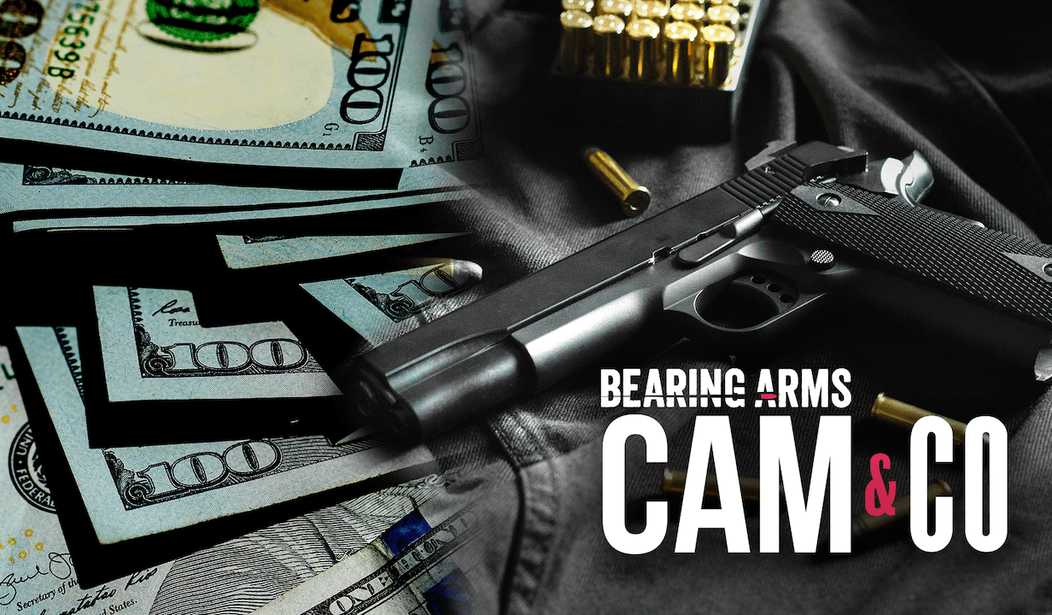I recently had the chance to speak with the Second Amendment Foundation’s Alan Gottlieb about a case out of Maryland that challenges the state’s ban on so-called assault weapons, and on today’s Bearing Arms’ Cam & Co we’re following up on that discussion with a very insightful conversation with Second Amendment attorney, professor, and scholar David Kopel, who’s the main author of an amicus brief submitted to the Supreme Court in support of the lawsuit on behalf of several law professors and organizations like the Cato Institute, John Locke Foundation, and the Independence Institute, where Kopel serves as research director.
The main thrust of the brief, according to Kopel, is to hammer home the point that lower court decisions upholding bans on modern sporting rifles are based on “untenable reasoning” and violate existing Supreme Court precedent. From the brief’s opening paragraphs:
The Seventh Circuit purported to favor arms like those of the Founding Era. Yet the court upheld a ban on self-loading firearms, a type that preceded the Second Amendment by a century-and-a-half.
The Second Circuit employed an especially unfavorable version of intermediate scrutiny that considers only the government’s evidence, and that does not consider less restrictive alternatives.
The First Circuit second-guessed law-abiding citizens’ personal choices of common defensive arms.
All four of this Court’s Second Amendment precedents on arms bans—Caetano, Heller, McDonald, and Miller—eschewed means-ends balancing. This Court’s approach has always been categorial.
The rifles at issue here are “in common use,” as lower courts have acknowledged. “Common use” is not determined by how often a gun is fired in self-defense. “Common use” encompasses all lawful uses, including hunting and self-defense. Arms bans do not become constitutional if they slice protected classes of arms into smaller subclasses. Dick Heller’s 9-shot .22 caliber revolver was not particularly common, but handguns are very common.
It’s ludicrous to argue that semi-automatic rifles, which are the most commonly-sold rifle in the country today and lawfully possessed by millions of Americans, are “unusual,” but that’s exactly what some courts have done. The Fourth Circuit, however, which is the controlling court in the current challenge to Maryland’s ban, took that argument even further and declared in an en banc ruling upholding the state’s ban that semi-automatic rifles aren’t protected by the Second Amendment because they’re “like” fully-automatic and select-fire rifles that are “most useful in military service.”
As Kopel explains, that tortured logic doesn’t stand up to scrutiny.
The Fourth Circuit’s test is inconsistent with Staples v. United States, 511 U.S. 600 (1994). That case noted the “long tradition of widespread lawful gun ownership by private individuals in this country,” and explicitly distinguished common AR-15 rifles from the military’s M-16 rifles. Id. at 602.
Staples held that AR15 rifles, which “traditionally have been widely accepted as lawful possessions,” do not share the “quasisuspect character” of hand grenades, as M-16 rifles might. Id. at 601 (requiring prosecution to prove that defendant knew that his defective rifle discharged two rounds per trigger pull).
Even if semiautomatic rifles could be considered “like” automatic military machine guns, the Fourth Circuit’s test would uphold banning the firearms most plainly protected by the Second Amendment. As described in the petition, the rifles at issue are widely owned for hunting and self-defense. Pet.Br. 22. The same was true of most long guns that Americans brought to militia service during the colonial and founding periods.
Kopel shared some fascinating history of firearm development in the 17th and 18th centuries, starting with the advent of the Dutch fowler, a gun that like today’s modern sporting rifle, was used for a variety of lawful purposes, including hunting as well as individual and community self-defense. As the amicus brief lays out, because colonists and early Americans “needed firearms that met both militia requirements and hunting needs, in America, ‘civil and military uses of firearms dovetailed as they had not generally done in Europe.'”
Since colonial times, Americans have chosen versatile firearms well-suited for hunting, personal protection, and community protection. Yet under the Fourth Circuit’s test, all such firearms, from the Dutch fowler onward, could be prohibited. They are very “like” military firearms in that they were the most-used guns for militia service.
The Fourth Circuit’s opinion isn’t just an absurd take on our Second Amendment rights, it ignores American history as well.
There’s much more discussion to be had in the video link above, and I’d encourage you to check out the brief by Kopel and his fellow legal scholars in its entirety when you have the chance. As for the next steps in the case known as Bianchi v. Frosh, Maryland’s Attorney General has until March 14th to submit his reply brief, and after that the case will be in the Court’s hands. A decision on whether to grant cert, however, might not come until after SCOTUS has released its opinion in the pending case dealing with New York’s “may issue” carry laws, which is likely going to come down in late May or June. It may be a few months before we learn what the Court plans to do with Maryland’s gun ban, but I’m cautiously optimistic that the issues the case presents will be of great interest to a majority of the justices.









Join the conversation as a VIP Member